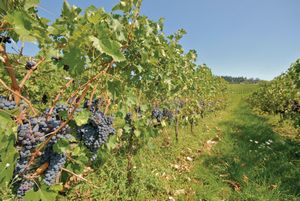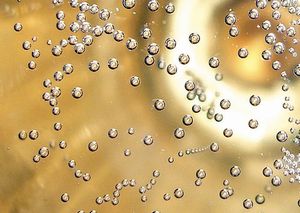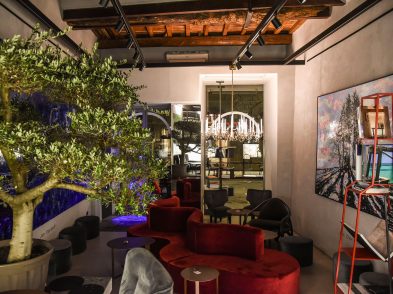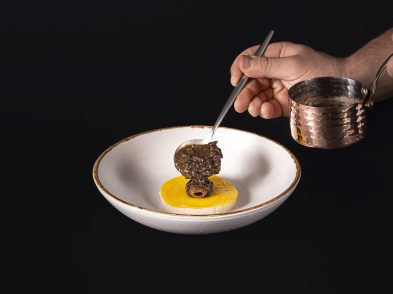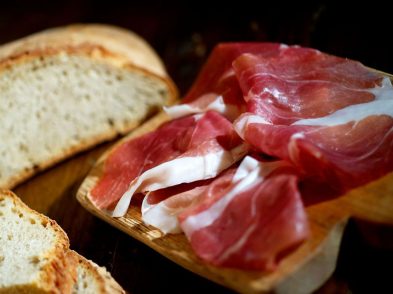“Chestnuts roasting on an open fire” are fine, but a favorite sound of the season is the pop of a cork from Champagne or another sparkling wine. About 40% of the year’s supply is consumed during December, with a crescendo on New Year’s Eve. Italy is blessed with a range of sparkling wines and France, home of Champagne, as its neighbour. So choosing your holiday bottle of bubbly should not be a problem. Or is it?
Bubbles are the key. Better wines have smaller bubbles, more of them, which last longer. Scientists estimate a bottle of fine Champagne may hold 49 million bubbles! To be called Champagne with a capital “C,” the wine must have been made in France’s northernmost winemaking region, Champagne. Otherwise it is simply a sparkling wine. Champagne is made from a combination of three grapes; pinot noir, pinot meunier, and chardonnay. There are three major types: non-vintage (containing a blend of grapes from different years), vintage (all the grapes were harvested in a single year), and “prestige cuvee” (from a single vintage and with longer aging). As you can imagine, they are priced in the same order.
Most fruits, including grapes, ferment –convert sugar into alcohol – naturally. The initial procedure for making sparkling wine is very similar to that of traditional wines: pick the grapes, press them, macerate (leave the pulp and skins together for some time), and remove the juice from the tanks. Then, to make a sparkling wine, you need to get carbon dioxide into it, to make it sparkle. This is called the second fermentation. The cheapest, most basic sparkling wines are made using what is called, the bicycle pump method: which is done by pumping carbon dioxide into a tank full of wine and bottle it. Bad idea.
A second way is the Charmat or tank method. Here the second fermentation, with the addition of yeasts and sugars, takes place in vats. This does not make bad wines; just wines that don’t have the character or body of those made the third way. This method, which requires that the second fermentation take place in the bottle in which it will come to market, is called the methode champenois exclusively (per the European Union) when applied to Champagnes. For wines made the same way outside the region, the term used is “classic” or “traditional” (metodo tradizionale or metodo classico). This involves winemakers’ hand turning each bottle regularly. Naturally, these are the most expensive, due to labour intensity.
Italy makes some wonderful sparkling wines in various ways with a variety of grapes. Words to watch for are Frizzante (initial fermentation was stopped at an alcohol level of 4-6%. The resulting wine will be fairly sweet), Spumante (alcohol level reaches 9% before it is cooled down; the wine is higher in alcohol, has more effervescence and less residual sugars), and Prosecco (made in the Veneto from prosecco grapes). Because Prosecco is a sparkling (Spumante) wine, both words are on the label.
In choosing your bottle, be aware of the range of dry to sweet. “Extra Brut” indicates a very dry wine; “brut” somewhat less so. Oddly “extra dry” is actually the first of the sweet wines. “Demi sec” or “medium dry” puts the wine into the dessert wine category.
Three steps to get ready to serve the wine: chilling, opening, and choosing its glass. First, refrigerators (worse yet, freezers) can have lethal effects on your wine. You should never put a sparkling wine into a refrigerator more than two days before serving; preferably a few hours. Prolonged time at low temperatures compromise or kill its scents and aromas. So the wine really needs to be in an ice bucket, where it should stay for about twenty minutes before opening and where it should rest between servings.
When you are ready to open that properly chilled wine, remember and respect the fact that the pressure inside the bottle is roughly three times that of air inside a car tire. After you have taken off the paper cover and metal holder, you remove the cork slowly, turning the bottle in one direction and the cork in the other. As it’s said, the gas should exit sweetly, almost with a sigh.
A flute-shaped glass is ideal for better wines: you can best appreciate the bubbles climbing through the narrow, tapering glass. They are perfect when serving an aperitif or making a toast. However, it is currently popular to serve Prosecco in long stemmed, broad mouthed glasses – the ones you would use for fine red wines. This is especially true if you are serving the wine with food.
Sparkling wines of every style and price are readily available in Florence at wine shops, enotecas, and supermarkets. In addition to well known Champagne brands such as Moet & Chandon, Tatinger, and Mumm, a company called La Flute is bringing 50 Champagnes into Italy made in limited quantities. Try Baroni Alimentare in the Central Market, if this is of interest.
Napoleon is rumoured to have said of Champagne, “In victory you deserve it; in defeat you need it.” Couldn’t agree more!



